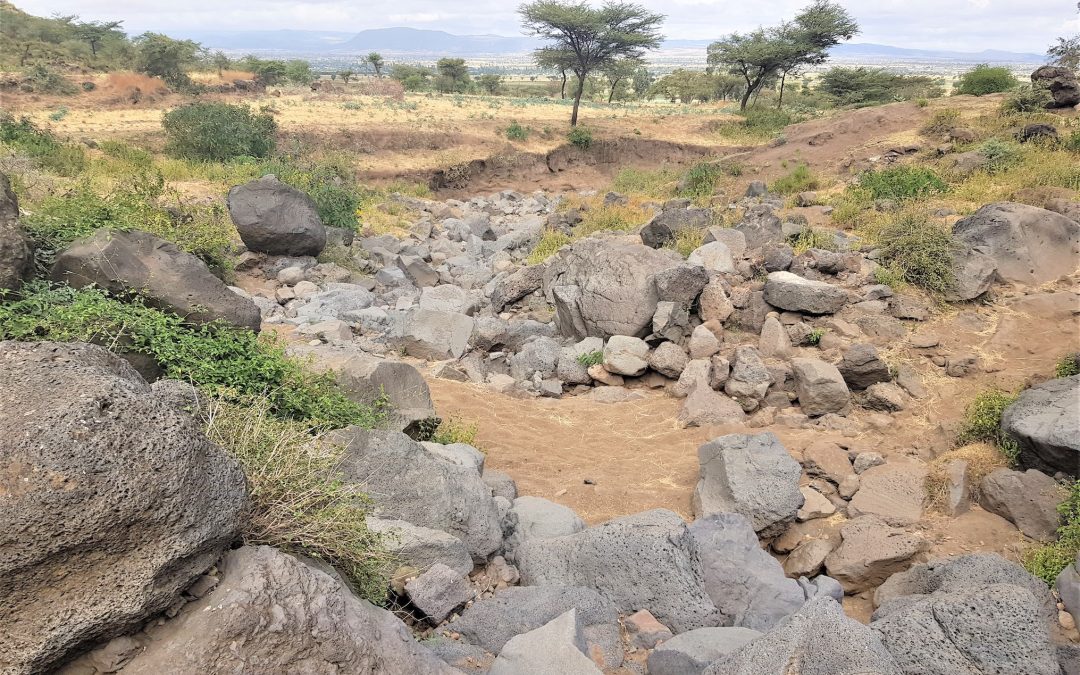By Eyob Getahun
The CIFOR-ICRAF team is establishing a site where focused efforts can be made to overcome the huge challenges posed by climate change.
‘The major challenges in restoring degraded land in Ethiopia are ensuring the required quality and quantity of interventions, inadequate capital to invest in land management, inadequate research work and lack of material and human capacity at local levels,’ said Director Tefera Tadesse of the Natural Resources Management Directorate of the Ethiopian Ministry of Agriculture. ‘The Boset engagement landscape is expected to address all these challenges.’
Speaking at a workshop held in Adama on 12 December 2020 that was aimed at making the first engagement landscape in Ethiopia a reality, Tadesse added that the incidence of droughts and floods has increased in Ethiopia in the last 10 years compared to the previous decade.
‘Land restoration and avoiding further degradation are key pathways to achieve resilience in the face of such threats and at the same time improve food security and alleviate the poverty of vulnerable people,’ he said.
Engagement landscapes are geographic locations where concerned stakeholders carry out concentrated long-term work to support transformational change and enhance resilience. The first engagement landscape in Ethiopia was selected for Boset District in the East Shewa Zone of Oromia Regional State in the Great Rift valley of East Africa. The district capital, Welenchiti, is 114 km from Addis Ababa. The Boset engagement landscape is expected to serve as a live learning site and a national exemplar.
The workshop was jointly organized by the Ministry of Agriculture and CIFOR-ICRAF with the objectives of introducing the purpose of the engagement landscape, developing a shared understanding of land degradation and restoration work in Boset District and discussing options and challenges, identifying key stakeholders, as well as gathering baseline information.
In his presentation at the workshop, senior scientist and development advisor at CIFOR-ICRAF, Endalkachew Woldemeskel, who is coordinating the establishment of the landscape, said the Boset engagement landscape is needed to carry out concentrated and long-term work in the district by avoiding scattered efforts on large geographic areas, which possibly dilute impacts because of money, staff and time limitation.

‘The engagement landscape is important to bring about transformational change and enhance resilience,’ he said. ‘It also serves as a demonstration and helps in scaling up the good practices and monitoring progress.’
Further, achievement of the United Nations’ Sustainable Development Goals requires that successful restoration efforts reach larger numbers of farmers and cover more hectares over the coming decade. The Government of Ethiopia fully recognizes degraded landscapes and forests as important challenges impeding realization of the country’s planned economic growth and transformation program. Thus, Ethiopia has embarked on ambitious programs of restoring 22 million hectares of degraded landscapes within the next 20 years, which is embedded in Ethiopia’s climate-resilient green economy: green economy strategy.
However, despite a large restoration commitment, efforts in Ethiopia have not been as successful as they might because of limited availability of evidence-based and contextually appropriate practice and management options, institutional constraints, and capacity and skill gaps.
The workshop was attended by staff from departments of the Ethiopian Ministry of Agriculture; experts and development workers from Boset District government offices; representatives of CIFOR-ICRAF, World Vision and Catholic Relief Service; and experts from Oromia Region and East Shewa Zone.
The engagement landscape is expected to involve a wide range of people, including researchers, development partners, farmers, staff of other government bodies, and people working along value chains, to co-design the options and the monitoring framework that will generate evidence for policy and decision making.


